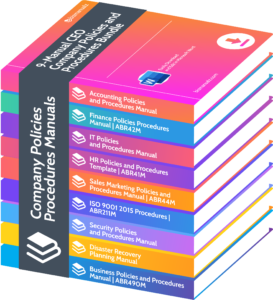How to Choose The Right Business Metrics

Selecting the right metrics for your biz is key to success. But with so many to choose from, how do you know which metric is most important? How to choose the right business metrics.
Choosing The Right Business Metrics
Start by aligning chosen metrics with your business goals. What are you trying to achieve? Increasing revenue? Improving customer satisfaction? Streamlining operations?
Next, consider relevance. Metrics need to provide meaningful insights to inform decisions and drive action. For example, if running an e-commerce site, tracking conversions and order value is more important than daily website traffic.
Also, take into account data availability/reliability. Do you have access to leading indicators and accurate data to measure over time? If not, selecting metrics based on unreliable/inconsistent data will hinder informed decision-making.
It’s also important to strike a balance between financial, operational, and customer-focused metrics for a comprehensive understanding of performance. By carefully selecting the right business metrics, you can gain a competitive edge and drive your biz towards success!
Understanding Business Metrics
Gaining a full understanding of business metrics? Let’s look at some categories and examples.
The Financial type reveals a company’s financial health. These include revenue, gross profit margin, net profit margin, ROI, and cash flow.
The Customer type measures customer satisfaction and loyalty. Examples are CAC, CLV, NPS, retention rate, and AOV.
Operations metrics check efficiency and productivity. Examples are production cycle time, inventory turnover ratio, on-time delivery rate, employee utilization rate, and defect rate.
Marketing metrics show the effectiveness of marketing efforts. Conversion rate, CTR, CPL, website traffic sources, social media engagement, and email open rates are necessary.
Employee performance metrics let businesses monitor productivity levels. Examples are ESS, absenteeism rate, THPEPY, turnover rate, and average sales per employee.
Monitor metrics regularly. Compare to industry benchmarks or set targets. Every business is different, so identify the metrics that match your goals.
Too much data can be overwhelming. Focus on key indicators that fit your objectives. Then you can make better decisions.
Identifying Key Business Objectives
Identifying key business objectives is a must for any organization. It helps with aligning strategies and boosting growth. Defining goals and priorities helps to focus efforts and resources to succeed.
To identify the right objectives, companies should consider:
- Revenue growth
- Customer satisfaction
- Market share
- Operational efficiency
- Employee productivity
These objectives give a clear roadmap for decision-making and resource allocation.
Check out this table of common objectives:
| Objective | Description |
|---|---|
| Revenue Growth | Increasing sales and revenue with successful strategies |
| Customer Satisfaction | Give customers happiness with quality products/services |
| Market Share | Expand presence by gaining more customers |
| Operational Efficiency | Optimize processes for less costs and better productivity |
| Employee Productivity | Enhance employee performance to get better results |
It’s important to note that objectives are related and can affect each other. For example, improved operational efficiency can lead to increased revenue growth by reducing expenses.
For the right metrics, organizations must first set their goals. For revenue growth, they may track metrics such as sales revenue, profits, or customer lifetime value. For customer satisfaction, they could check Net Promoter Score (NPS) or customer retention rate.
Monitor market share with metrics like market penetration or brand awareness. With operational efficiency, measure cost per unit produced or cycle time. For employee productivity, track sales per employee or employee engagement score.
Choosing the right business metrics is important. It lets organizations track progress towards their goals. Focusing on relevant data points makes better decisions and allows for strategy adjustment. Additionally, reviewing and analyzing these metrics reveals areas for improvement, drives innovation, and keeps ahead of competition.
Types of Business Metrics
To measure the success of a business, understanding the different types of business metrics is important. These metrics are like key performance indicators, giving valuable insights into different aspects of the company.
Let’s look at these metrics in a table:
| Metric | Description | Purpose |
|---|---|---|
| Revenue | Income from sales | Evaluating financial performance |
| Customer | Tracks customer acquisition, satisfaction, and retention rates | Assessing customer satisfaction and loyalty |
| Conversion | % of visitors who take desired actions | Analyzing user behavior |
| Lead | Potential customers interested in product/service | Evaluating marketing effectiveness |
| Profitability | Profitability of a business | Determining financial viability |
Other noteworthy metrics worth considering are employee productivity and brand equity. Employee productivity can be measured by tracking output per hour or overall efficiency. Brand equity can be gauged by looking at customer perception, brand loyalty, and market share.
When choosing which metrics to use, consider industry standards, company goals, and target audience. Align the chosen metrics with specific objectives. For example, if improving customer satisfaction is top priority, tracking customer-related metrics like NPS or CSAT can provide important insights.
Regularly reviewing and adapting the chosen metrics based on evolving business needs is essential for success. This helps businesses stay focused on relevant areas and make data-driven decisions.
By understanding the different types of business metrics and tailoring them to suit goals, companies can gain a comprehensive view of their performance and take actions for growth and success.
Factors to Consider When Choosing Business Metrics
Choosing business metrics can be tricky. Consider these key factors to make the process easier: relevance, availability, actionability, accuracy, and timeliness. Analyze each one carefully and choose the metrics that align with your specific needs. Also, consider industry benchmarks, customer feedback, and competitor analysis to help you make informed decisions.
Maximize your business potential! Pick the right metrics now and stay ahead of the game. Make data-driven decisions and watch your business soar to greater success!
Common Mistakes to Avoid
Entrepreneurs often make mistakes when selecting metrics for their business. These issues can damage decision-making and result in bad outcomes. Here are six common errors to dodge:
- Focusing on metrics that won’t help you reach your business goals
- Not making sure your metrics match your overall strategy
- Using too many metrics – this can confuse and tire out your team
- Not tracking leading indicators, which can predict future performance
- Ignoring metrics that show customer satisfaction and loyalty
- Not reviewing and updating metrics regularly to make sure they’re still relevant
Moreover, other details must be considered. This includes customizing metrics based on industry-specific things, like seasonality or market changes. By checking out these nuances, you can get an edge.
Implementing and Tracking Business Metrics
It’s essential to define clear objectives and spot the relevant metrics, which can vary depending on the industry and goals. To show this, let’s consider a make-believe e-commerce business named “TechTrendz”.
Table: Tracking Business Metrics for TechTrendz
| Metric | Description | Formula |
|---|---|---|
| CAC | Average cost to get a new customer | Total Marketing Expenses / Number of New Customers |
| CLTV | Predicted revenue from a customer’s lifetime | Average Purchase Value x Purchase Frequency x Average Customer Lifespan |
| Conversion Rate | Percentage of website visitors who do a desired action | Number of Conversions / Number of Website Visitors |
| Churn Rate | Rate at which customers stop using a product or service | Number of Customers Lost / Total Number of Customers |
TechTrendz also use other metrics related to their industry, like Return on Ad Spend (ROAS), Inventory Turnover Ratio, and Net Promoter Score (NPS).
Tracking these metrics allows TechTrendz to examine the success of their marketing campaigns, customer loyalty, operational effectiveness, and areas for improvement.
Business metric tracking has been applied since long ago. IBM is a perfect example. It started as a tabulating machine maker in the early 1900s. IBM adapted to changing markets by tracking key business metrics. Now, with its focus on cloud computing, AI, and quantum computing, it still relies on strong metric systems to be innovative and stay ahead of the competition.
Right Business Metrics
The concept of measuring business success with metrics was born in the late 19th century. Frederick Winslow Taylor was the pioneer, creating scientific management principles and quantifying productivity metrics for factories. Businesses worldwide recognized the significance of metrics and adopted this approach.
Nowadays, it’s necessary to adjust to the ever-changing business landscape and keep using metrics. Choosing the correct metrics is essential for success. Analyze data points and evaluate performance to gain a clear understanding of your business. Select metrics that align with your goals and check regularly to make sure they stay relevant and effective.
When selecting metrics, think about the goals you want to achieve and the data that will get you there. Make sure the data is accessible and accurate, and review the frequency of collection. Also, use both leading and lagging indicators. Leading metrics can show future trends, helping you fix issues before they become problems. The lagging metrics measure past performance and give you a historical perspective.
Frequently Asked Questions

1. What are business metrics?
Business metrics are quantifiable measures used to assess the performance and progress of a business. They provide insights into various aspects such as sales, marketing, finance, and customer satisfaction. These metrics help businesses make informed decisions and evaluate their success.
2. Why is it important to choose the right business metrics?
Choosing the right business metrics is crucial because it determines what aspects of your business you will focus on and measure. If you choose irrelevant or ineffective metrics, you may end up wasting resources and not gaining meaningful insights. The right metrics allow you to track progress, identify strengths and weaknesses, and make data-driven decisions for growth and success.
3. How do I identify the right business metrics for my company?
Identifying the right business metrics requires a thorough understanding of your company’s goals, objectives, and key performance indicators (KPIs). Start by defining what you want to achieve and then break it down into measurable components. It’s essential to align your metrics with your business objectives and consider factors such as industry benchmarks and the availability of data.
4. What are some commonly used business metrics?
Commonly used business metrics include revenue, profit margin, customer acquisition cost (CAC), customer lifetime value (CLV), return on investment (ROI), sales growth rate, customer satisfaction score (CSAT), and employee productivity. However, the choice of metrics depends on your industry, business model, and specific goals.
5. Should I focus on lagging or leading indicators?
It’s important to focus on a combination of lagging and leading indicators. Lagging indicators reflect past performance, such as revenue or customer churn rate, while leading indicators predict future outcomes, such as website traffic or qualified leads generated. Combining both types of indicators provides a more comprehensive view of your business’s overall health and helps you take proactive measures for improvement.
6. How often should I review and update my business metrics?
Regularly reviewing and updating your business metrics is essential to stay relevant and adapt to changing circumstances. The frequency may vary depending on your business’s needs, but a best practice is to review them on a monthly or quarterly basis. Keep an eye on market trends, industry benchmarks, and any significant internal or external changes that may impact your metrics.
















Leave a Reply